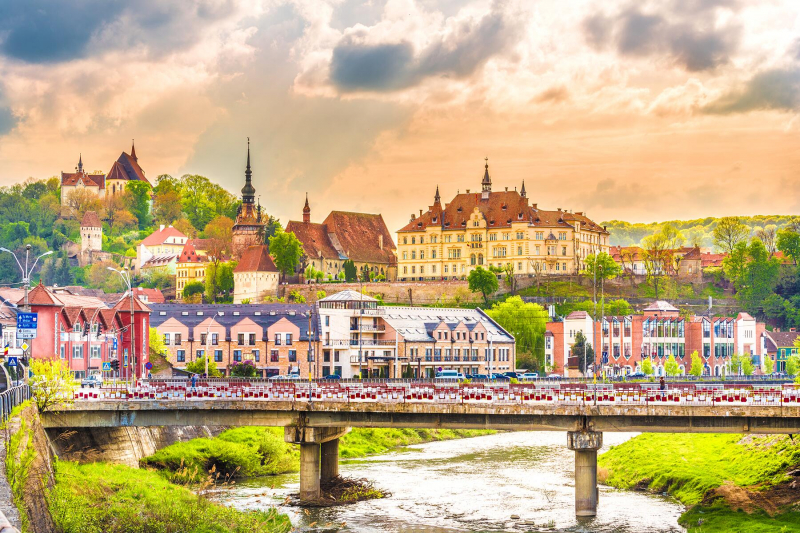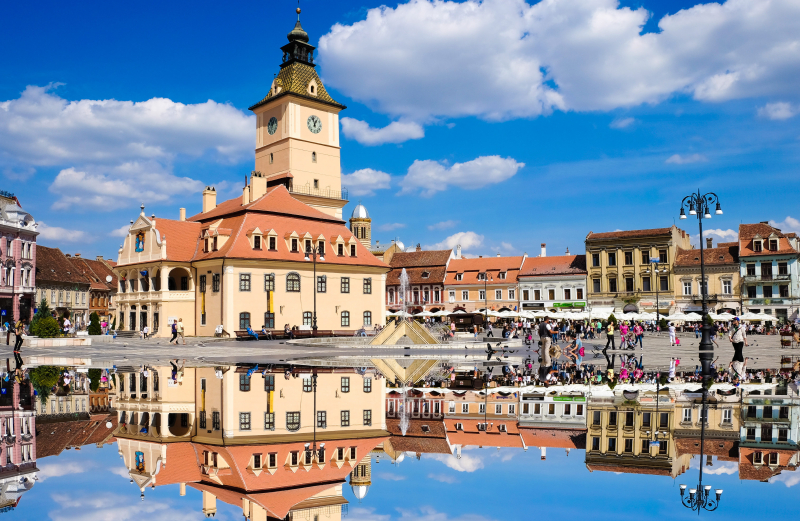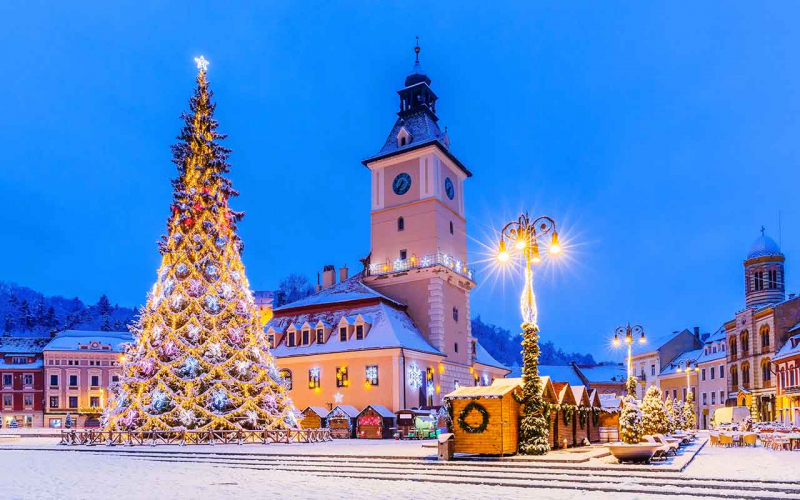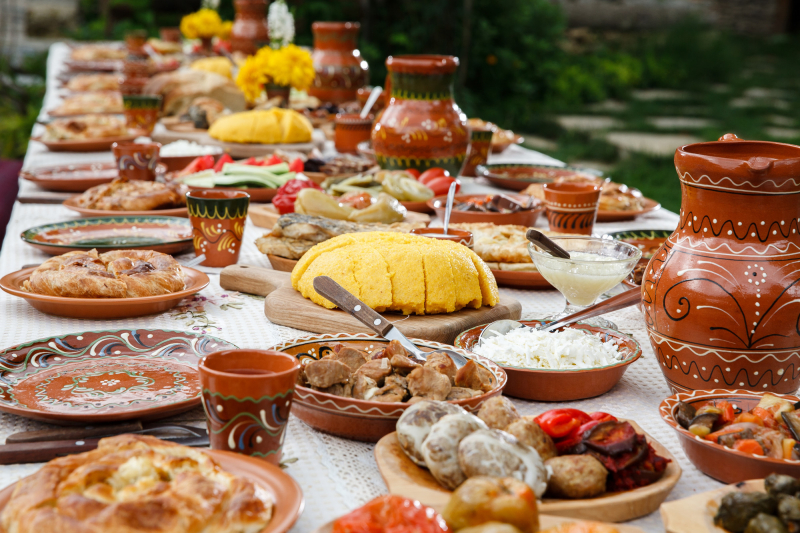Top 10 Things about Romania You Should Know
If you're considering a trip to Romania, there are a few things you should know before going — things that will make you want to visit this underappreciated ... read more...country even more. Bucovina's rolling hills, Romania Do you know anyone whose top ten travel destinations includes Romania? Most likely not. This is due to the fact that it is one of Europe's most underappreciated countries. However, there are other reasons why Romania should be at the top of your travel bucket list, one of which is Bucharest, Romania's gritty yet Instagrammable city. Here are some Things about Romania You Should Know.
-
Romanians know how to design beautiful structures. Pastels appear to be the color of choice for building ornamentation here, which makes communities so lovely and pleasant!
Sighisoara, one of Europe's most beautiful and well-preserved medieval villages, has to be the most colorful. You'll find all the pastel colours you can imagine if you get lost in the cobblestoned streets of this little and enclosed village.
The medieval town of Sibiu, constructed by German settlers in the 12th century, is not far from Sighisoara. The town retains its old-fashioned grandeur, but the brightly colored buildings make it feel more comfortable than majestic.
But beware: the structures here have eyes... You never know who is looking! Join a tour of the city to discover about the secrets of the houses with eyes and many others.
Brasov, one of Romania's most popular tourist destinations, displays the beauty of gothic, baroque, and Renaissance architecture. Explore the Old Town to find some of the country's most attractive streets as well as a plethora of pastel-colored structures.
https://www.fodors.com/world/europe/ 
https://www.pinterest.com/ -
Romania provides beautiful views that will stay etched in your memory, from alpine ranges to tranquil lakes and dramatic canyons. After all, it is Europe's most biogeographically diversified country.
The Transylvanian Alps, which are part of the Carpathians, are not only beautiful, but they're also great for outdoor activities like hiking, biking, and even visiting an ethical bear sanctuary where you can see rescued bears enjoying the closest thing to freedom in their native habitat.
With so many mountains, there are many of lakes, some of which are rather distinctive, such as Lacul Roșu (Red Lake), a natural dam lake constructed over 200 years ago following a huge landslide in Harghita County.
The magnificent undulating hills of Bucovina, further north, are a fantasy of what a perfect pastoral scene might seem like in everyone's mind. In the autumn, the unspoilt Romanian woodlands put on a spectacular display of reds, yellows, and oranges.
https://www.traditionandadventure.com 
http://www.infotravelromania.ro -
If you venture off the usual road in Romania, you will find yourself in a different universe. Many settlements in Romania's countryside are not used to seeing tourists, so you'll feel as if you're discovering something new. Everyone is cordially invited.
In fact, one of the most appealing aspects of visiting Romania is how warm and hospitable the people are.
Crit, near Sighisoara, one of Transylvania's oldest villages, was one of the villages we visited. Its peacefulness and tranquility contribute to its allure, as do the rows of pastel-colored dwellings.
Ciocănești is another village where you feel as if you've stepped back in time. It is known for its painted buildings embellished with traditional patterns and is located in Suceava County, Bucovina.
It all began when one of the locals wanted to adorn her home with traditional motifs embroidered on folk clothes, and after tourists expressed interest, the mayor decreed that all newly constructed houses be done in the same manner.
This custom has been passed down the years, and it is considered that the more extravagant your decorations are, the better a householder you are, therefore there can be fierce competition in the community.
https://narodajovnews.blogspot.com/ 
https://myculturelecture.blogspot.com -
Everywhere you go in Romania, you will come across history. Despite the fact that Romania as we know it is only 100 years old, it has undergone significant changes through time and across regions.
The world-famous painted monasteries from Byzantine periods can be found in Bucovina, in the north-east. These ornately adorned monasteries, which date from the 15th and 16th centuries, are covered with bright frescos both inside and out. Voronet blue, for example, is a shade of blue named after one of the monasteries. It is exclusively found in Voronet Monastery and is made of lapis lazuli.
Hundreds of Saxon (German) towns and villages existed in Transylvania until recently. Saxons arrived in the region in the 12th century, quickly establishing themselves and gaining governmental influence because to their skills. Cities and towns like Sibiu, Sighisoara, and Brasov are proud of their Saxon ancestry.
Until recently, Transylvania had hundreds of Saxon (German) towns and villages. Because of their skills, Saxons arrived in the region in the 12th century and swiftly established themselves and gained governmental control. Sibiu, Sighisoara, and Brasov, for example, are proud of their Saxon heritage.

https://blog.comparabus.com 
https://nomadparadise.co -
One of the Things about Romania You Should Know, Romanian traditions may not be apparent in big cities like Bucharest and Brasov, but venture into the countryside and you'll find old villages and rituals that are still part of everyday Romanian life and that the inhabitants are passionate about preserving.
The Hutul way of life has traditionally revolved around logging, cattle and sheep breeding, but they are most known for producing the Hutul pony, a horse breed famed for its endurance and resilience. Egg painting is another tradition that has been preserved. Romanian women, particularly in rural regions, have traditionally painted hollowed-out eggs to commemorate Easter.
This has now evolved into an art form in its own right, and you can see over 7,000 artistically adorned eggs from various animals at the Muzeul Ouloi (Egg Museum) in Vama, Bucovina. It was a tremendous joy to see them with their beautifully painted horses and traditional clothing. So, if you have enough time in Romania let emerge yourself into their traditions.
https://travelguideromania.com 
https://www.pinterest.com -
With over 250 castles scattered around the country, you won't be able to walk very far without seeing one.
Bran Castle, as described above, and Peles Castle, possibly Romania's most beautiful castle and not far from Brasov or Bucharest, are two of the most impressive. Cantacuzino Castle, on the outskirts of Bucharest and one of the city's most Instagrammable spots, is another lovely castle.
Neamt Citadel, a castle in Moldavia that is really a fortification and boasts lovely views over attractive agricultural fields, is something a little different. When it comes to castles in Romania, there is something for everyone.
Bran Castle, commonly known as Dracula's Castle, is also nearby. It's believed to be the Count's house, and it matches Bram Stoker's description. This is despite the fact that Bram Stoker never visited Transylvania and relied only on research and a healthy dose of imagination. The castle is located in the town of Bran, near Brasov, so if you like horror movies, here is the perfect destination to spend Halloween.
http://nicholasjv.blogspot.com/ 
https://www.wildromaniatravel.com/ -
Romanian cuisine is incredibly excellent and one the top Things about Romania You Should Know, but because it is predominantly meat-based, it can be a bit hefty.
Grilled mixed meat, stews, goulash, and various charcuterie-style meats are all staples of the Romanian diet. Prepare to eat a lot of vegetable soup, mushrooms, and polenta if you're a vegetarian or vegan! Yes, polenta (or mămăligă, as it's known in Romania) goes with everything, as it was originally peasant and shepherd fare. This cornmeal-based side dish is so common that it may be found in almost every restaurant, no matter how upscale.
Because Romanian cuisine has its roots in the Eastern Orthodox Church, it features a variety of holiday dishes organized according to the season and holiday. Vegetables, grains, fruits, honey, milk, dairy products, meat, and game are all used in Romanian cuisine.
There are many various varieties of dishes, which are occasionally grouped together under a generic word; for example, the category ciorbă encompasses a wide range of soups with a distinct sour flavor. Meat and vegetable soup, tripe (ciorbă de burtă) and calf foot soup, and fish soup are some of the variations, all of which are soured with lemon juice, sauerkraut juice (zeamă de varză), vinegar, or borș (traditionally made from bran). In Romania, the category țuică (plum brandy) refers to a strong alcoholic spirit.
https://www.inyourpocket.com/ 
https://www.inyourpocket.com/ -
If you plan on traveling throughout the country, it is recommended to rent a car. While Romania's train network appears to be outstanding on paper, the trains are slow and uncomfortable, with the exception of a few lines. Buses are also an option, but they only go to the major cities, and you can get lost trying to figure out the convoluted system of routes, shifting schedules, and phone reservations.
The one disadvantage of renting a car in Romania is that many Romanian drivers disregard speed restrictions and appear to be in a rush to pass every automobile on the road. Keep a safe gap between you and the car in front of you, and avoid taking long drives every day. It takes almost always longer than Google Maps estimates.
Romania is an ideal destination for a road vacation. Even though there are many economical and well-connected public transportation options, there's something special about having your own vehicle.
It's an unrivaled luxury to be able to visit major attractions before the crowds arrive, or to stop and soak in the breathtaking nature whenever you want. Thankfully, Romanian rental fees are minimal, so even budget travelers can indulge.
https://www.romania-insider.com 
https://www.pinterest.com -
Romania is now completely safe. Okay, maybe not fully, but no country can claim that. Romania, on the other hand, is safer than many prominent destinations, including Italy, the United Kingdom, and the United States, according to Safe Around. You should be fine if you take the same measures that you would in your own nation.
You'll have no trouble traveling alone, especially if you're used to driving, planning your route, and reserving all of your services yourself. Furthermore, English is frequently spoken as a second language in Bucharest and larger cities.
It is recommended to book a guided tour if you want a less involved planning process or if you want to travel beyond Trip Advisor's suggested sights. A private or small-group tour has the benefit of providing far more intriguing facts and tales than a guidebook could possibly provide, as well as a personalized experience based on solid knowledge..
https://www.goodfreephotos.com/ 
https://www.pinterest.com/ -
One of the Things about Romania You Should Know, Romanians have some fantastic cheese, in addition to numerous delicious components of Romanian food. The uniquely Romanian Brânză de burduf is one such style.
This semi-soft, sheep's milk cheese is prepared in a unique way in the Transylvanian mountains. In a wooden bowl, finely chopped fresh cheese curd is salted and manually stirred. The combination is then matured in pine bark tubes for up to three months, giving the cheese its characteristic flavor.
Brânză de burduf is a typical Romanian cheese prepared from the milk of sheep or (sometimes) buffalo. The cheese is placed in a previously cleansed sheep's stomach or skin. Alternatively, it can be inserted in a pine bark tube.
This cheese has a little soft texture, but the scents and flavors are strong. The name brânză de burduf refers to the process of manufacturing, which involves cutting, salting, and kneading a traditional sweet cheese called caș in a huge wooden bowl.
https://www.tasteatlas.com/ 
https://www.tasteatlas.com/































